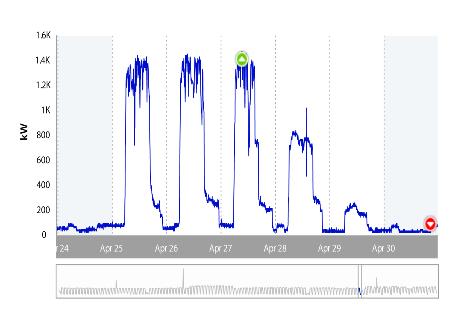Petroleum (oil) is the largest U.S. primary energy consumption followed by natural gas, coal, nuclear electric power, and renewable energy (EIA, 2011). Electricity is a secondary energy sources produced by these sources. Some of the main energy consumers in the U.S. are residential, commercial, industrial, and transportation. Industry accounts for one-third of the energy used in the country, 28% of that energy comes from natural gas and 14 % comes from electricity (EIA, 2009). Electrical demand growth is projected to increase at about 1% per year through 2035, while from 2005 to 2009 cents per kilowatthour increased by 1.24 (EIA, 2009). Due to a continually increasing demand for energy sources and a limited supply of those sources, energy prices are expected to increase (EnerNoc, 2011).

Energy Management System (EMS)
An Energy Management System or EMS provides a company constant data feedback on their energy consumption. Depending on the type of EMS, energy consumption can be tracked all the way down to 5 min intervals. The more detailed the EMS the greater potential for improvements. Imagine and EMS that provides a company’s natural gas consumption every hour as opposed to a power company providing the information monthly. Some benefits of an EMS include; being able separate consumption rates, able to identify high consuming areas, able to make daily adjustments to improve monthly bill, automated system automatically manages/adjust to improve energy inefficiencies, and able to create new process improvements to increase efficient energy use. Figure 1 shows a snapshot of an EMS.
Managing Energy and Process
Fostering innovation and creativity should be an ongoing project for managers. An EMS provides the tools for a manager to take employee innovation and put it to the test. Innovative employees provide solutions to ongoing problems associated with the business, finances, process, and product, because they are the experts at their job/task. Providing employees with real time feedback showing how their improvements have helped to save money motivates employees to continually improve. This is crucial in sustaining an atmosphere of continuous improvement.
Continue reading “RESEARCH BRIEF: Reducing Energy Inefficiencies Using an Energy Management System”
